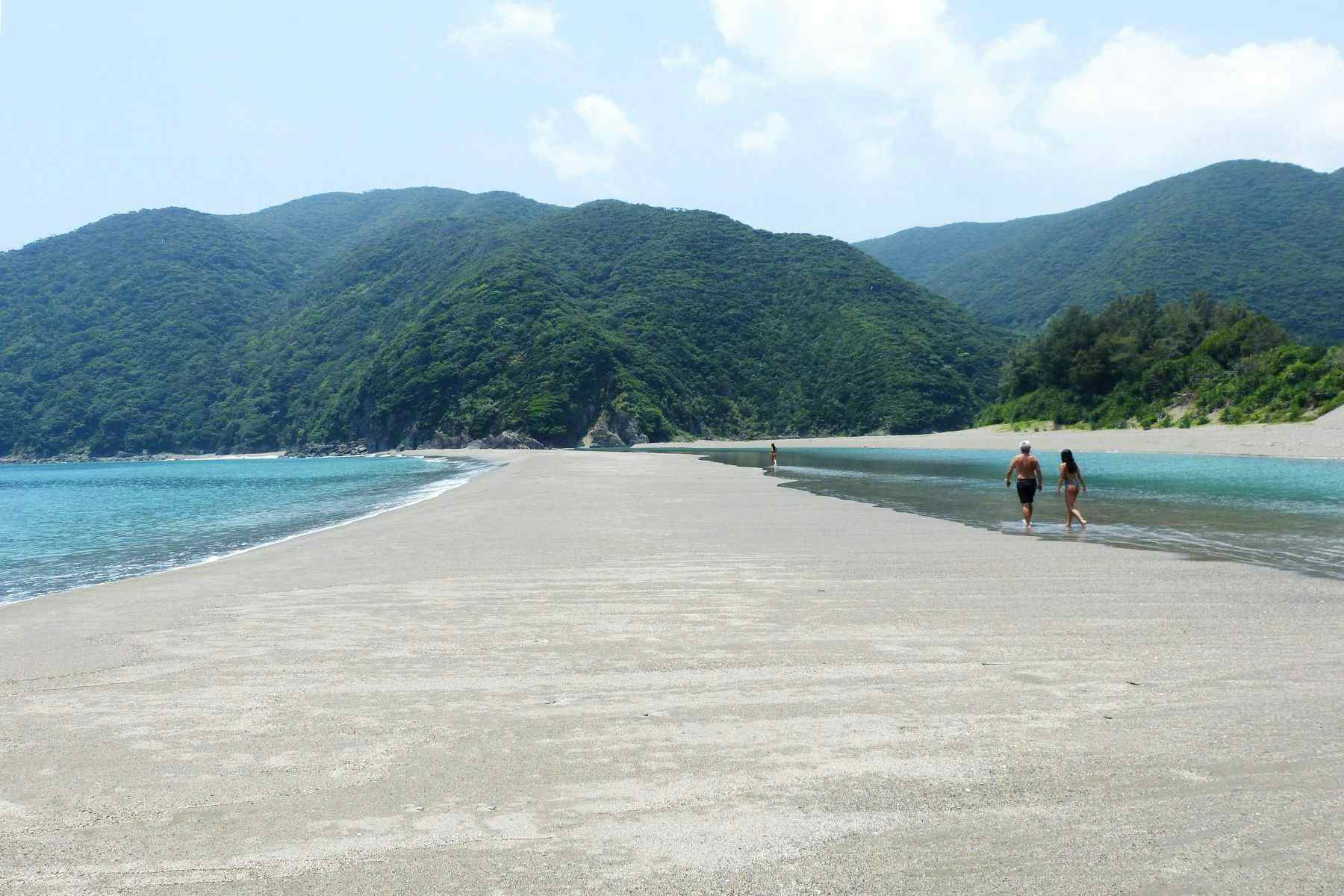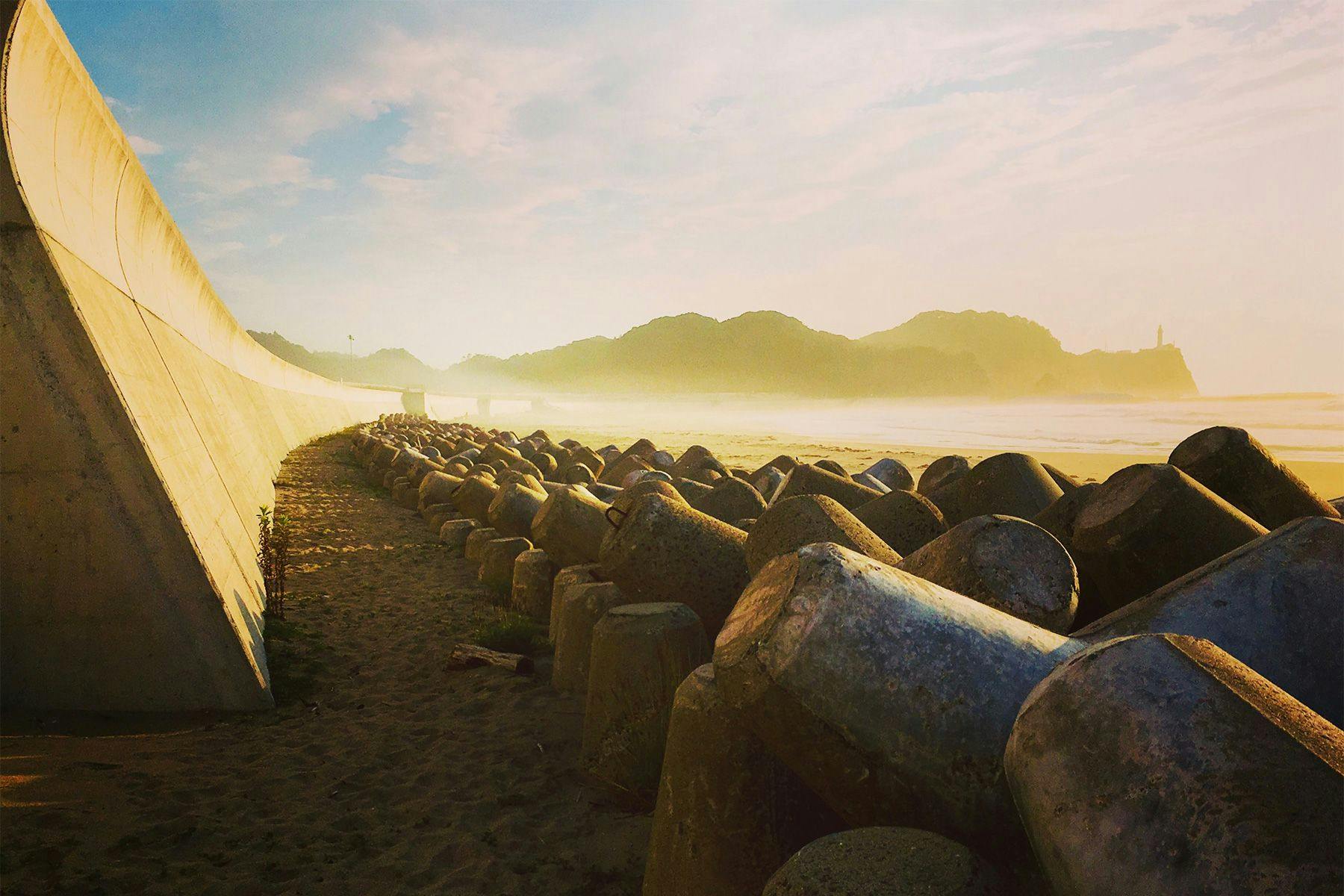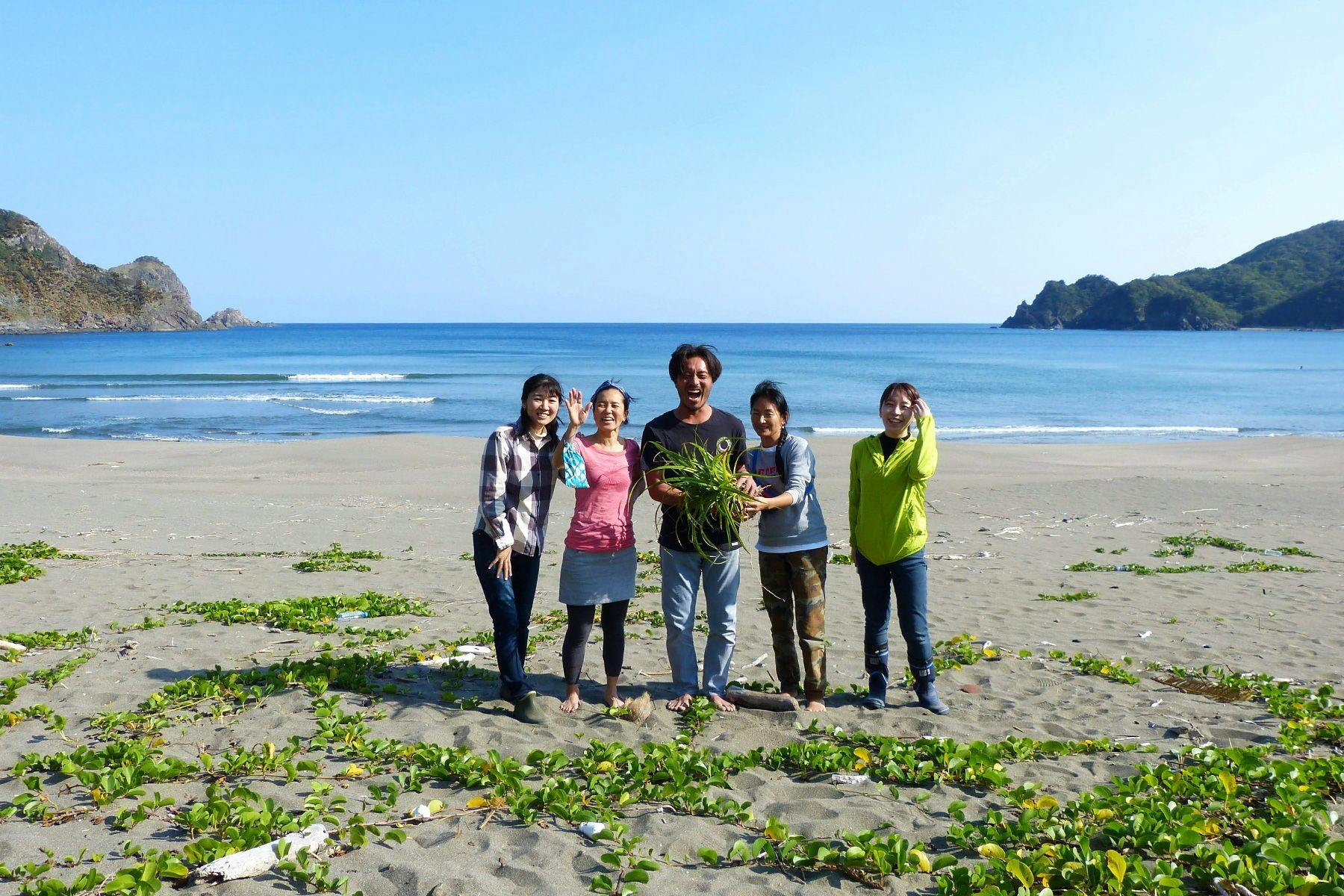Community Projects, NatureA Line In The Sand

With the Summer Olympics in Japan approaching and surfing debuting as one of five additional sports, preparations are underway for accommodating the wave of visitors. But it is ironic to think that, while at the host beach of Tsurigasaki there are constant developments, locals of another Japanese coastal community are fighting to keep the beach as it is.
Located on the Amami-Oshima island, in the Kagoshima prefecture, roughly 1,300km (800mi) south-west of Tokyo and north of world famous Okinawa Island, lies the still pristine beach-village of Katoku – the last un-concreted beach village in the island and one of the few in Japan (there any many non-concreted beaches with no road access in Amami. But also many virgin beaches with concrete). Besides featuring a nearly untouched landscape and being home to various endemic (and endangered) species such as the Ishikawa frog and the Amami black rabbit, as well as serving as breeding ground for sea turtles, the valley is cut by the dam-less Yoshimitoku river whose pure and potable water empties into the sea and helps shape a sandbank that creates waves and pools where surfers, swimmers and beachgoers of all ages can play without hazards.

Japan is notorious for its concrete beaches and the use of seawalls and tetrapods to supposedly protect the shore from tsunamis and large swells caused by typhoons, as well as regular erosion. However, not only are these expensive constructions illegal in many countries, but they are often seen by locals as more destructive than constructive (the sand next to seawalls dries quickly, impeding vegetation growth, while waves backwashed by the wall speed up erosion), both for the landscape and wildlife as well as the place’s identity and because of the misuse of public funds.

In Katoku, following major dune erosions in 2014, the Kagoshima prefecture set in place a 320 million yen (roughly US$3 million) project to build a 6.5 metre tall concrete seawall across 180m of beach where a natural wall of pandanus trees has long stood. Aware of the potential of this species’ network of roots for holding back erosion, an opposition group of local residents and volunteers began planting Pandanus shoots where the dune had been eroded in 2015 – a move that led them to form the Conservation Group for the Protection of Amami’s Rainforests, Rivers and Coastal Ecosystems two years later.

Despite gathering thousands of signatures, conducting studies and presenting various reports in collaboration with independent scientists, as well as a formal request by the Nature Conservation Society of Japan to follow the Eco-DRR (Ecosystem based disaster risk reduction) practice recommended by the Environment Ministry as of 2018 and tap into the Pandanus tree’s potential, the Kagoshima prefecture remained adamant. With preparations for the construction starting in 2019, the group raised funds via a crowd funding platform, ReadyFor, hired environmental lawyers, and filed a lawsuit against the Kagoshima prefecture in June, managing to halt the construction temporarily.
Last November, director Adam Lewis captured some of Katoku’s natural beauty on film and interviewed residents involved with the cause, translating it all in a short documentary to raise awareness of the issues faced by the one of the last untouched beach communities in Japan.
“I have lived in Katoku for 10 years now. My love of surfing brought me here. When I first came to Katoku, there was a forest of Pandanus trees lining the length of the beach. When you would go to the ocean you had to walk through a pandanus tree tunnel, and as you exited you would see the waves breaking. The first time I laid eyes on the wave and the beach I thought ‘Wow, Japan still has places this amazing!’ I immediately wanted to live here and raise a family here.”
– Shimpei Matsumoto, local surfer

Beyond the nature conservation motifs that support the Katoku cause, the position this particular beach village holds as being one of the last beaches of Japan without concrete not only reinforces the need for it to establish a positive preservation example but also a potential model case for environmental learning where walls are more green and less grey.
“If you think of an airport, we have a very long road which can disperse the kinetic energy of the airplane. We could just use a wall and that would be the most efficient way to stop an airplane, but that obviously would have bad consequences for the people inside the plane and for the surrounding environment. So a natural beach is like a long road that can gently disperse the energy of waves. If we lose that, then the impacts are much more violent.”
– Dr. Giovanni D. Masucci, Marine Biologist
Finally, it also sets another opportunity for Japanese surfers to reassess their role in the surfing community and relationship with the ocean. Perhaps then surf talks at Japan Olympic Games can extend from how the waves are at that moment to how they will be in the future.
Follow www.facebook.com/katokuhama for news and updates on the campaign.
Sign the petition at http://save.katoku.org/
If you wish to also support the campaign financially, there is a crowdfunding campaign to pay off the
Coastal Engineering Lab impact study and beach survey, to prove scientifically a seawall would be disastrous. The crowdfunding campaign runs until March 31st, 2020 and can be found at http://fund.katoku.org/
The author and Surf Simply would like to thank Jon Takaki, founder of the Amami Conservation Group, for the assistance and imagery that made this article possible. All images used are licensed under a Creative Commons license (CC BY ND).